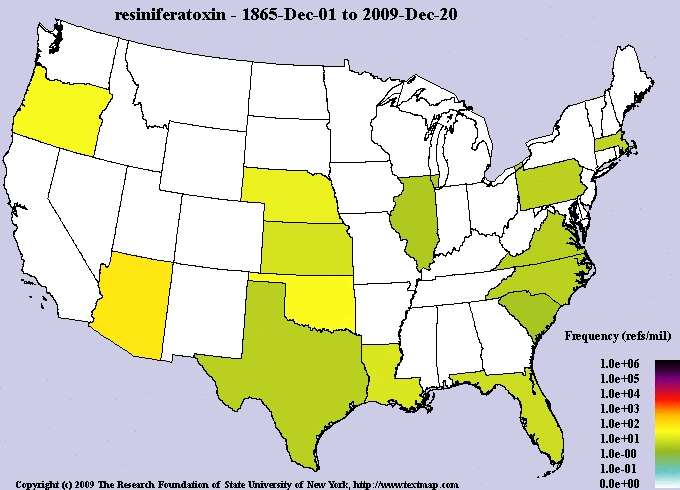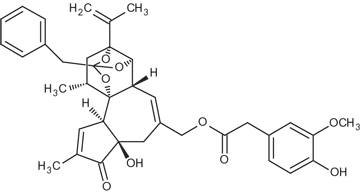Formula C37H40O9 Density 1.35 g/cm³ | Molar mass 628.71 g/mol Pubchem 104826 | |
 | ||
Resiniferatoxin (RTX) is a naturally occurring chemical found in resin spurge (Euphorbia resinifera), a cactus-like plant commonly found in Morocco, and in Euphorbia poissonii found in northern Nigeria. It is an ultrapotent analogue of capsaicin, the active ingredient in chili peppers.
Contents

Overview

Resiniferatoxin activates transient vanilloid receptor 1 (TRPV1) in a subpopulation of primary afferent sensory neurons involved in nociception (the transmission of physiological pain). TRPV1 is an ion channel in the plasma membrane of sensory neurons and stimulation by resiniferatoxin causes this ion channel to become permeable to cations, especially calcium. The influx of cations causes the neuron to depolarize, transmitting signals similar to those that would be transmitted if the innervated tissue were being burned or damaged. This stimulation is followed by desensitization and analgesia, in part because the nerve endings die from calcium overload.
Total synthesis
A total synthesis of (+)-resiniferatoxin was completed by the Wender group at Stanford University in 1997. As of 2007, this represented the only complete total synthesis of any member of the daphnane family of molecules.
Toxicity
Resiniferatoxin is toxic and can inflict a chemical burning sensation in microscopic quantities. The primary action of resiniferatoxin is to activate sensory neurons responsible for the perception of pain. It is currently the most potent TRPV1 agonist known to science, with ~500x higher binding affinity for TRPV1 than capsaicin, the active ingredient in hot chili peppers such as those produced by Capsicum annuum. Animal experiments suggest that, in humans, ingestion of 10 g may be fatal or cause serious damage to health. It causes severe burning pain in sub-microgram (less than 1/1,000,000th of a gram) quantities when ingested orally.
